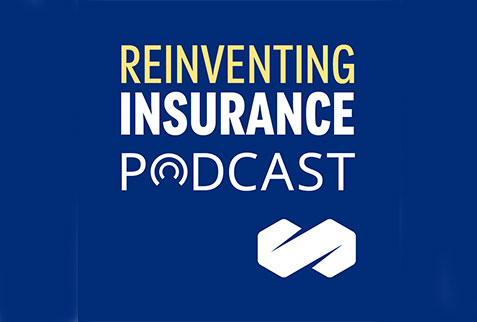Largest Life Insurance Market in the World
The United States life insurance marketplace is the largest in the world by premium (see Figure 1 below). While there are many major US domiciled insurers, most international insurance behemoths have set up shop in the US either through acquisition or organically to grab a piece of the proverbial pie. Giants such as Allianz, Aviva, AXA, Dai-ichi, Generali and Manulife attribute a large proportion of global life insurance sales to the US market.
Figure 1
2021 Life Insurance Market Share and Penetration Rate by Country
|
Country |
Life Premium in USD Millions |
Market Share |
GDP in USD trillions |
Penetration Rate |
|
United States |
609,642 |
20.3% |
23.3 |
2.6% |
|
China |
365,456 |
12.2% |
17.7 |
2.1% |
|
Japan |
295,850 |
9.9% |
4.9 |
6.0% |
|
United Kingdom |
284,284 |
9.5% |
3.1 |
9.2% |
|
France |
185,445 |
6.2% |
3.0 |
6.2% |
|
Italy |
146,001 |
4.9% |
2.1 |
7.0% |
|
Germany |
109,961 |
3.7% |
4.3 |
2.6% |
|
South Korea |
101,866 |
3.4% |
1.8 |
5.7% |
|
India |
96,697 |
3.2% |
3.2 |
3.0% |
|
Taiwan |
89,059 |
3.0% |
0.8 |
11.1% |
|
Total Top 10 |
2,284261 |
76.2% |
64.2 |
3.6% |
|
Total World |
2,997,569 |
100.0% |
96.5 |
3.1% |
Source: Swiss Re Sigma No. 4/2022
However, life insurance sales in the US have remained relative flat during the past decade. According to the American Council of Life Insurers Fact Book 2022, the average annual growth rate for US life insurance face amount from 2011 to 2021 was only 1.7%[1]. This includes a large pandemic bump of 6.5% from 2020 to 2021. The growth rate from 2011 to 2020 averaged a meager 1.2% annually. Even with the incredibly low inflation rates during the same time period, life insurance sales have not nearly kept up with inflation nor population growth. And more recently, the Life Insurance Marketing and Research Association (LIMRA) announced that premium sales were lower by 4% in the second quarter of 2023[2]. The same study showed that there was an increase in the number of policies sold, but number of policies does not drive growth.
Looking at life insurance penetration rates (premiums divided by Gross Domestic Product or GDP) by country tells a completely different story. Using this criterion, the US lags behind Asian countries such as Hong Kong (measured separately from China), Singapore and Taiwan. It also lags behind many European countries such as Denmark, Ireland, Finland, the UK and Switzerland[3].
So, what makes the US life insurance market so robust in terms of sales and how can the US improve its penetration rates? One cause of a need for life insurance is to cover the cost of a mortgage in case of premature death of a breadwinner. Depending upon the size and type of mortgage used, life insurance may actually be a prerequisite to obtaining a mortgage. Approximately 66% of families in the US own homes whereas all other countries listed in Figure 1 have lower rates of home ownership, except for Italy[4]. Purchasing a home in the US generates much activity for life insurance sales teams.
Desire for children to be college educated is also a major expense that causes families to purchase life insurance. Premature death of a breadwinner in the US will severely impact the ability for the children to attend college. The US has about the same rate of college attendance as the UK and South Korea at 46%, and lags slightly behind Japan at 50%[5]. However, the US has the highest average tuition cost causing the need for greater amounts of life insurance[6].
Estate tax is also a major driver of life insurance sales. For many Americans, the family home will be the major asset passed down to heirs. If the heirs desire to keep the home, it may be difficult if 40% of the home valuation is due in taxes. Many families purchase insurance to cover estate taxes, another large source of US life insurance sales. Until recently, the US was tied with Japan for having the largest estate tax rate in the world at 55%. It has now dropped down to fourth place with only Japan, South Korea and France ahead of it[7].
Mortgage protection, college tuition assurance and estate tax coverage are only a few reasons why the US life insurance market leads the world. There are many other reasons. The real question is how can the US market grow in size and penetration rate? Perhaps looking at some of its European neighbors, the US could learn.
Family Income Rider
Even if individuals do not own a personal life insurance policy, they may be covered by their employers under a group life insurance policy in the US. Many mid-to-large employers will offer group life cover as part of their employee benefits packages. Typically, an employer-sponsored group life insurance program will cover individuals as a multiple of annual salary or a flat amount. One, two- or three-times annual salary is very typical for larger insurers. This, of course, favors the more highly compensated employees.
According to the US Bureau of Labor statistics, the median salary in the US for the first quarter of 2023 was USD 1,100 per week or about USD 57,200 annually (without seasonal adjustment)[8]. Even with a generous corporate group life insurance policy of three-times salary, a family of the average worker would receive about a USD 170,000 benefit upon death of the worker. With the average mortgage in the US reaching a record USD 453,000, a generous group life insurance policy would not even pay half of the mortgage[9].
The typical flat group life insurance plan is USD 50,000. Those who have recently sent a child to a US university know that this would not even cover all costs for a state school. If the death occurs while the child(ren) are young, the family will have time to invest the lump sum and hopefully achieve its goal, but this requires a financial acumen that many do not possess.
What is different in other countries and especially prevalent in Europe is a mandatory risk component for all employer-based savings plans. These retirement vehicles are called 401k plans in the US, named after the applicable section in the Federal Tax Code, and Pillar II savings in most other countries. This risk component would pay a percentage of the deceased worker’s salary to the family until the spouse reaches retirement age, with a reduction when the children are emancipated. In other words, the annual salary continues minus expenses assumed to have been incurred by the worker.
Many old-timers in the US life insurance market will equate this risk element to a traditional Family Income Policy. While still available as a rider, the Family Income Policy had a long history as a stand-alone policy in the US. It is difficult to examine how robust sales are for this type of rider, since many companies lump riders together when generating statistics, however it is safe to say that it is not a major seller. Otherwise, the policy would not have turned into a rider. This does not mean, however, that it is not important. Many European markets feel that the benefit is important enough to mandate in all occupational pension programs.
What this means for the average worker is that he or she is assured that upon premature death, a proportion of the worker’s salary will continue to the family as if the worker were still earning an income. Younger workers would generate a greater benefit for their families in present value (their families would receive the benefits for a longer period of time) and older workers would generate a lesser benefit – exactly what is needed. The traditional group life insurance policy seems to be counterintuitive – paying more to older and wealthier families. This does mean that individual sales of life insurance in European countries are not as robust as in the US, but insurers receive premiums from employers to cover the risk component of Pillar II pensions, albeit “behind the scenes”.
With an estimated USD 6.3 trillion of assets in 401k plans at the end of the third quarter 2022, and an approximate average premium of 1% of assets for the risk component of European Pillar II plans (which also covers disability), that equates to an additional USD 600 billion of life insurance premium for the US life insurance market – or about double the current size[10]. The insurance penetration rate would also double yet would still be half of what it is in the leading market – Taiwan. These, of course, are very round numbers and such a mandate may cause a decrease in current sales, but the effects would still be extremely significant.
Even more important than premium and penetration rate growth in the US market, is the needed coverage to families. Instead of being faced with a lump sum after the death of a breadwinner, the family would receive income in the manner that it is accustomed. The family can continue to make mortgage payments, college tuition payments (or contributions into a college fund) and retirement savings contributions. There are no immediate decisions that need to be made with a pile of money that the surviving spouse may not know what to do with. And, this covers gig workers in Europe as many countries require gig workers to set up a Pillar II account.
It sounds like a true win-win. In fact, it could be a win-win-win with the final win applicable to US State Governments. A recent Pew study found that State Governments will miss out on an estimated USD 334.3 billion in lost tax revenue and increased support programs for citizens not saving enough for retirement[11]. Requiring all 401k plans to have a risk component would certainly go a long way to filling that USD 300 billion+ gap in state budgets over the next 20 years.
Conclusion
The US Congress has made great strides for Americans with the passage of the Setting Every Community Up for Retirement Enhancement (SECURE) Act and SECURE Act 2.0. Perhaps industry associations could lobby for a required risk component for all 401k plans as part of SECURE 3.0. This, in conjunction with requiring gig workers to set up a 401k, could go a long way to providing much-needed protection for all workers. It could also give a much-needed boost to the US life insurance market.
Covering insurance “behind the scenes” through employer-based risk plans is not going to get big headlines. However, this is a life insurance industry that remained relatively silent while performing brilliantly during the worst terrorist attack that the nation has ever seen, surviving the great financial crisis and paying record benefits during a once-in-one-hundred-year pandemic. And this is just in the past 25 years!
Our industry is great. It protects families from the financial consequences of premature death or disability of a breadwinner and outliving its retirement savings. The US market is the largest in the world but can still learn from other markets to grow even larger. The Family Income Policy was a great mainstay of the American market. Maybe it is time to pull it off the shelf and throw it into all retirement savings plans. No, it is not a new product. No, it doesn't make use of artificial intelligence. No, there aren’t any fancy bells and whistles. But sometimes the simplest ideas can be the best ideas.
[1] https://www.acli.com/-/media/acli/public/files/factbook/07fb22chapter07lifeinsurance.pdf
[2] https://www.limra.com/en/newsroom/news-releases/2023/limra-u.s.-life-insurance-policy-sales-increased-4-in-first-quarter-2023-driven-by-small-and-mid-size-carriers/?&utm_source=industry_news2use&utm_medium=email&utm_campaign=6.13.23-newsletter
[3] https://www.swissre.com/dam/jcr:4a1688f7-13e9-4b79-b5ba-917a00d2ea30/sigma4_2020_extra_Complete.pdf
[4] https://tradingeconomics.com/country-list/home-ownership-rate
[5] https://worldpopulationreview.com/country-rankings/most-educated-countries
[6] https://www.insider.com/cost-of-college-countries-around-the-world-2018-6#slovenia-0-23
[7] https://taxfoundation.org/estate-and-inheritance-taxes-around-world/
[8] https://www.bls.gov/news.release/pdf/wkyeng.pdf
[9] https://www.cnbc.com/2022/02/16/the-average-size-of-a-new-mortgage-just-set-a-record.html
[10] https://www.ici.org/401k#:~:text=401(k)%20plans%20hold%20%246.3,of%20former%20employees%20and%20retirees
[11] https://www.pewtrusts.org/en/research-and-analysis/articles/2023/06/01/states-face-334-billion-shortfall-over-20-years-due-to-insufficient-retirement-savings
Ronald Klein 
IIS Research Expert: Life and Health
About the Author:
Ronnie is founder of Obtutus Advisory GmbH, an expert witness, contributor to the International Insurance Society and Advisor with Achaean Financial. He has over 40 years of insurance and reinsurance experience having worked and lived in 3 countries. Ronnie is Co-Chair of the Programming Committee for the ReFocus Conference and served on the Board of Directors of the Society of Actuaries. Before this, Ronnie worked as the Head of Life Reinsurance for Zurich Insurance Group in Zürich, Head of Life Reinsurance for AIG in New York and Global Head of Life Pricing for Swiss Re in London. Ronnie began his career at Mutual of New York. A little-known fact is that Ronnie holds a patent (US20060026092A1) for the first Mortality Bond issued called Vita when he was with Swiss Re.














